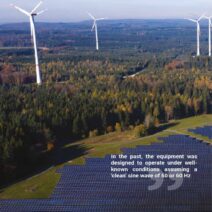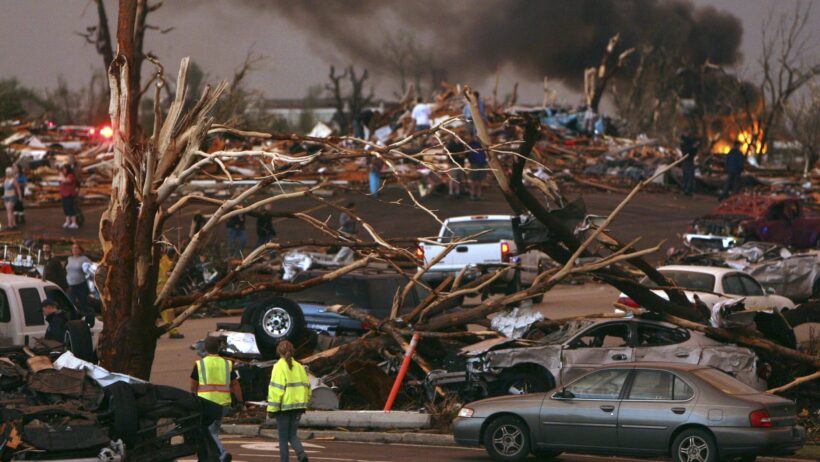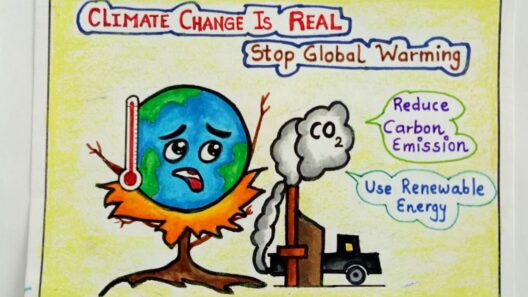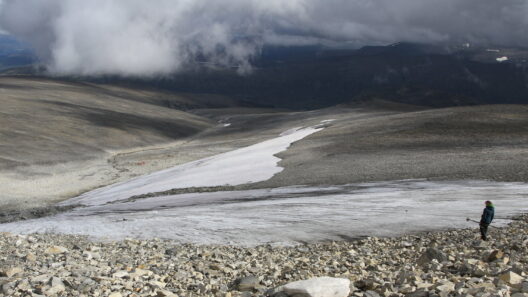Global warming has incited fervent debates regarding its impacts on our planet’s weather systems, particularly in relation to extreme weather events like storms and tornadoes. Observations over the past few decades indicate an uptick in the frequency and intensity of such phenomena, raising questions about the interplay between global warming and violent weather patterns. This discourse is not merely academic; it holds profound implications for communities, economies, and ecosystems worldwide.
To understand the nexus between global warming and violent storms, one must first delve into the mechanics of the atmosphere. As greenhouse gas emissions continue to rise, global temperatures have followed suit, leading to a series of climatic repercussions. Warmer air can hold more moisture—a fundamental principle of thermodynamics. This increase in humidity contributes to the formation of more potent storms. It is essential to recognize that heightened temperatures can foster not only the prevalence of storms but also their severity.
The phenomenon of warmer oceans cannot be overlooked, either. Sea surface temperature is critical for hurricane formation, serving as the main energy source for these colossal storms. With ocean temperatures increasing, scientists have observed that hurricanes are not only occurring more frequently but are also intensifying more quickly than in decades past. This tendency toward escalation can be observed through historical data, which show a marked increase in Category 4 and 5 hurricanes—a trend that is likely tied to anthropogenic climate change.
Moreover, the mechanics that govern tornado formation are equally complex. While tornadoes can occur in various climatic conditions, they often arise within severe thunderstorms, which are becoming more common as climate change progresses. The energy generated from warmer air contributes to the development of these storms, leading to multi-cellular storm complexes that can spawn destructive tornadoes. Researchers have begun to document an increase in tornado intensity, particularly in regions that are not traditionally prone to such violence.
Another critical factor to consider is the role of atmospheric instability. Global warming can exacerbate thermal gradients, resulting in enhanced instability within the atmosphere. In essence, warmer air masses collide with cooler, denser air, creating conditions ripe for violent storms. This dynamic has contributed to the perception that global warming is indeed catalyzing a rise in the destructiveness of tornadoes. Such instances are not isolated, as myriad geographical regions have recorded more powerful twisters than in previous years.
However, it is crucial not to oversimplify the relationship between global warming and tornado activity. Climate models hint at complex interactions, and while links to severity are increasingly supported by evidence, attributing single tornado events to climate change requires caution. Variability in local weather, geographic factors, and the inherent unpredictability of the atmosphere contribute to the challenges in establishing definitive causal relationships.
Furthermore, societal impacts stemming from these violent storms are profound. Communities that once thrived in moderate climates are now grappling with the devastating consequences of extreme weather. Economic repercussions are palpable as damages mount, potentially stretching the resources of local governments and insurers. Moreover, this surge in violent weather events can lead to displacement, forcing residents to leave their homes and adapt to new environments, with long-term psychological and social repercussions.
Importantly, urban areas, with their densely packed infrastructures, often face exacerbated risks. Urban heat islands, formed from concrete and asphalt absorbing heat, can intensify storm conditions. Consequently, cities might not only experience direct hits from storms but can also suffer from secondary effects like flooding due to overwhelmed drainage systems. The intersection of climate change, urbanization, and storm dynamics underscores the complexity of anticipatory measures.
In considering mitigation, it is vital to adopt a multifaceted approach. This includes not only reducing greenhouse gas emissions through renewable energy sources but also implementing robust infrastructure projects to withstand extreme weather. Developing communities’ resilience is paramount, allowing them to better cope with the increasing frequency and intensity of storms. This may encompass innovations in building design, improved forecasting systems, or bolstered emergency response plans.
Moreover, the discourse surrounding global warming and violent storms is burgeoning within the scientific realm, paving the way for affluent research agendas. Understanding storm behavior and its correlation with climate change is imperative. More rigorous data collection and advanced modeling techniques are essential to elucidate the complexities of these interactions. Such efforts could prove invaluable in forecasting and managing future storm-related disasters, ultimately saving lives and resources.
In conclusion, the evidence linking global warming to an increase in violent storms and tornadoes is steadily accumulating, bolstered by advancements in climate science. While the impacts of climate change are inevitably nuanced and multifarious, the overarching narrative must focus on resilience and adaptation. As we move forward, it is essential that society embraces proactive policies and innovative practices to mitigate the effects of climate change, acknowledging the pressing reality of our evolving weather patterns. The path ahead requires not just awareness but action, as we strive for a safer and more sustainable future in the face of climate uncertainty.







